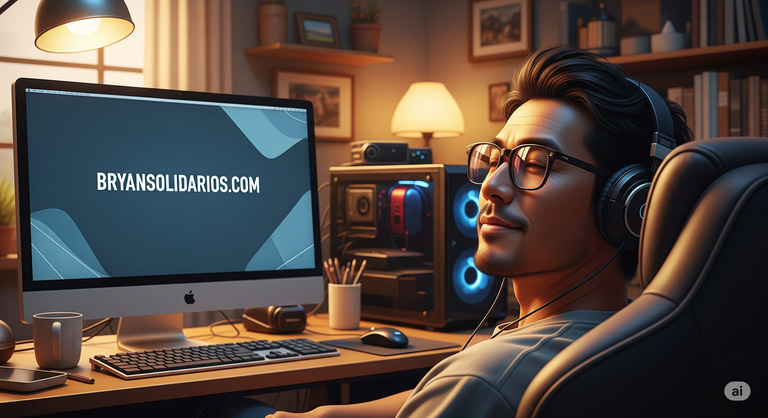How to Properly Use the VEO 3 Prompt Builder
Bryan Solidarios
7/20/20253 min read


How to Properly Use the VEO 3 Prompt Builder
This tutorial will guide you through each section of the VEO 3 Prompt Builder, explaining how to use it effectively to generate compelling prompts for your creative endeavors.
1. Understanding the Goal
The VEO 3 Prompt Builder is designed to help you construct detailed and nuanced prompts by breaking down complex ideas into manageable components. By filling in specific fields, you can ensure your prompt covers all essential aspects of your desired output, leading to more precise and creative results.
2. Navigating the Form Sections
The prompt builder is organized into several intuitive sections:
a. Core Elements
This section focuses on the central components of your scene.
Subject/Character:
Purpose: Define the main entity or character in your prompt.
How to Use: Enter a clear and descriptive noun or phrase.
Examples: "A majestic lion," "A young wizard," "An antique spaceship," "A bustling market street."
Action/Activity:
Purpose: Describe what the subject is doing.
How to Use: Use active verbs and specify the action.
Examples: "running through a savanna," "casting a spell," "navigating an asteroid field," "filled with vendors and shoppers."
b. Environment & Style
This section sets the scene and defines the overall aesthetic.
Environment/Setting:
Purpose: Describe the location or backdrop of your scene.
How to Use: Be specific about the type of environment.
Examples: "lush jungle," "futuristic city," "ancient ruins," "a serene lakeside."
Visual Style/Mood:
Purpose: Dictate the artistic or emotional tone of the output.
How to Use: Select from the dropdown list or type in a specific style.
Examples from dropdown: "Cinematic," "Anime Style," "Photorealistic," "Fantasy Art," "Sci-Fi," "Cartoon Style," "Surreal," "Vintage Film," "Documentary Style."
Custom Examples: "cyberpunk aesthetic," "impressionistic painting," "noir film."
Time of Day/Weather:
Purpose: Specify the atmospheric conditions.
How to Use: Describe the time of day or prevailing weather.
Examples: "golden hour," "stormy night," "foggy morning," "drizzling rain," "bright midday sun."
c. Visuals & Composition
This section helps you control how the scene is framed and lit.
Lighting:
Purpose: Define the type and quality of light in the scene.
How to Use: Describe the lighting conditions.
Examples: "dramatic volumetric lighting," "soft natural light," "neon glow," "harsh overhead light," "backlit silhouette."
Camera Angle/Shot:
Purpose: Specify the perspective from which the scene is viewed.
How to Use: Select from the dropdown list or type in a specific camera shot.
Examples from dropdown: "Wide Shot," "Close-up," "Medium Shot," "Dutch Angle," "Low Angle," "High Angle," "Tracking Shot," "Dolly Zoom," "Aerial View."
Custom Examples: "extreme close-up," "over-the-shoulder shot."
Camera Movement:
Purpose: Describe any dynamic motion of the camera.
How to Use: Specify how the camera is moving.
Examples: "slow pan," "dynamic tilt," "handheld shaky cam," "smooth crane shot," "fast zoom in."
d. Additional Details
This section allows for extra layers of specificity and mood.
Specific Details/Effects:
Purpose: Add intricate elements or special effects.
How to Use: List specific visual elements that enhance the scene.
Examples: "particles floating," "subtle reflections," "intricate patterns," "lens flare," "smoke effects," "glowing runes."
Keywords/Mood (comma-separated):
Purpose: Inject overarching themes, emotions, or descriptive adjectives.
How to Use: Enter single words or short phrases, separated by commas.
Examples: "epic, serene, mysterious, vibrant," "dark, gritty, futuristic," "whimsical, enchanting, nostalgic."
3. Generating and Copying Your Prompt
Once you've filled in the desired fields:
Click "Generate VEO 3 Prompt": This button will compile all your inputs into a single, coherent prompt string in the "Generated Prompt" text area below.
Review the Prompt: Read through the generated prompt to ensure it captures your vision accurately. You can go back and adjust any fields if needed and click "Generate" again.
Click "Copy to Clipboard": This button will copy the entire generated prompt to your system's clipboard. You'll see a brief "Copied to clipboard!" message to confirm.
Paste and Use: You can now paste your VEO 3 prompt into any compatible VEO 3 generation tool.
4. Tips for Effective VEO 3 Prompts
Be Specific but Concise: While detail is good, avoid overly long or redundant phrases. Each word should add value.
Prioritize Key Elements: Ensure your subject, action, and environment are clearly defined as they form the core of your prompt.
Experiment with Styles: Don't be afraid to try different visual styles to see how they impact the output.
Layer Details: Use the "Specific Details/Effects" and "Keywords/Mood" fields to add depth and atmosphere.
Iterate and Refine: The best prompts often come from a process of trial and error. Generate a prompt, see what it produces, and then come back to refine it based on your observations.
Consider the Flow: Even though it's a list of descriptors, think about how the elements might naturally flow together in a sentence or description. The builder automatically adds commas, but your input phrases should still make sense when combined.
By following these guidelines, you'll be well on your way to creating powerful and effective VEO 3 prompts!

Sample VEO 3 generated video using this prompt: A techy guy with glasses thinking out loud, typing at a laptop, room, photorealistic, wide shot
For any concerns, suggestions, feedback, please contact us at support@bryansolidarios.com
© 2025. All rights reserved.
